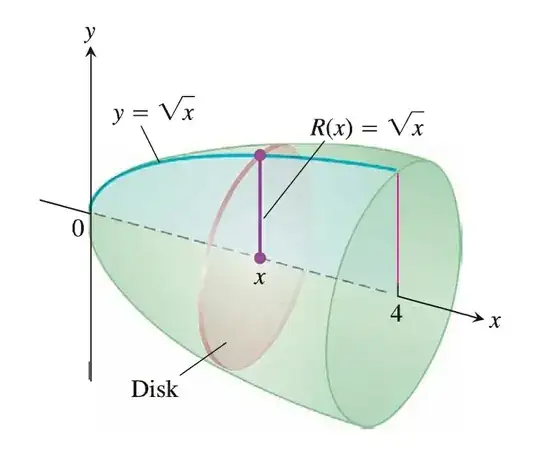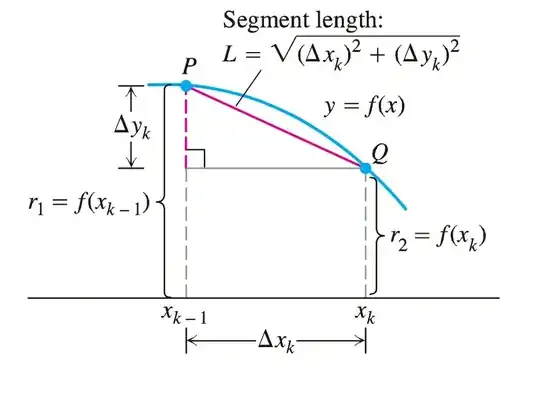This is perhaps best explained in terms of Pappus's Centroid Theorems:
Pappus's $(1^{st})$ Centroid Theorem states that the surface area $A$ of a surface of revolution generated by rotating a plane curve $C$ about an axis external to $C$and on the same plane is equal to the product of the arc length $s$ of $C$ and the distance d traveled by its geometric centroid (Pappus's centroid theorem). Simply put, $S=2\pi RL$, where $R$ is the normal distance of the centroid to the axis of revolution and $L$ is curve length. The centroid of a curve is given by
$$\mathbf{R}=\frac{\int \mathbf{r}ds}{\int ds}=\frac{1}{L} \int \mathbf{r}ds$$
Pappus's $(2^{nd})$ Centroid Theorem says the volume of a planar area of revolution is the product of the area $A$ and the length of the path traced by its centroid $R$, i.e., $2πR$. The bottom line is that the volume is given simply by $V=2πRA$. The centroid of a volume is given by
$$\mathbf{R}=\frac{\int_A \mathbf{r}dA}{\int_A dA}=\frac{1}{A} \int_A \mathbf{r}dA$$
Thus we can say for your cases that
$$
S=2\pi\int_0^4 y\ ds =2\pi\int_0^4 y\sqrt{1+y'^2} dx\\
V=\pi\int_0^4 y^2\ dx
$$
This is just as stated in the OP. Notice that here, the length, $L$ and the volume, $V$ have cancelled out, thus disguising the true nature of the equations.
Now, clearly you can't have
$$V=\pi\int_0^4 y^2\ dx=\pi\int_0^4 y^2\sqrt{1+y'^2} ~dx$$
But more to the point, the volume pertains to the area under the curve, whereas, the term $\sqrt{1+y'^2}$ in the surface area equation refers to the area along the arc of $ds$ and it has nothing to do with the volume of revolution.

